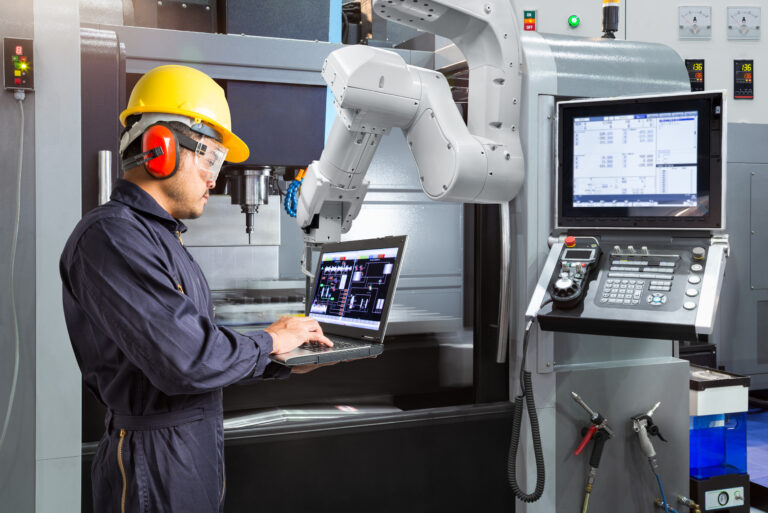Robot technology is always evolving to take on new tasks and improve production and quality in manufacturing. Once only seen in the largest plants, industrial welding robots are becoming common in small- to medium-size facilities too.
In the last few years, there’s been discussion about welding with the latest iteration of robots: collaborative robots, or “cobots”. In fact, last year’s FABTECH show included exhibits of mobile welding systems that can move around the shop to the point of need. Still other examples include cobot arms that can be outfitted with a welding torch, which can be swapped out for a gripper or other end-of-arm tool and redeployed for other tasks.
Cobot Characteristics
Small, easy to program and safe around humans, these characteristics make cobots an attractive technology. In general, they are designed for project-based, low-volume and high-mix production. They also move at slower speeds than their industrial cousins, and are best in situations where you are likely to change the path of the robotic arm regularly.
The features that make cobots uniquely safe for close proximity to humans allow operators to observe the welding in progress at a close range, and to make adjustments as needed. Short-run contract manufacturing or prototyping (in which parts, welding paths and parameters change often) are a few areas that can be benefited.

Cobot welding can also accomplish some of the human resource goals that industrial automation already achieves. Namely, as a way to address the shortage of skilled welders and the need to concentrate that limited supply on tasks that require their expertise.
Despite this, the need for welding experience doesn’t go away because you have a user-friendly cobot on the job. According to Engineering.com, “An experienced welder can quickly learn to program the path of the robot. Without welding experience, it’s more difficult. The programming is path-based. To input a good path, you need to know how to lay a good bead to begin with. For example, you must set the right angle of the welding gun to lay a good quality bead, something any welder can tell you takes practice.”
It’s All About the Application
Any time you’re looking into automation, the application determines the technology and equipment used. Welding is not inherently a collaborative process in a high-volume setting – the torch and other end-of-arm tools move quickly, parts are conveyed in and out, and safety equipment is extensive. All of this makes it impractical for an operator to come in and out of the cell to access the robot to adjust or reprogram it.
In a majority of manufacturing settings, especially those with high-volume and low-mix, a cobot is not going to meet the need for a truly automated welding system. Part size, arm travel speed and range, and the number of welds on a piece usually call for a caged, industrial robot alone, or with material handling or other automation equipment. A dedicated welding system is usually the best and most efficient fit.
As noted in Canadian Metalworking, “if you’re doing a vision-guided heavy-deposition, multipass weldment on a piece of earthmoving equipment, a collaborative robot is not the answer … but if you have a simple bracket you’re making 50 of a day, a robot that can be taught that quickly just makes sense. That moves the skilled welder in the shop upstream to more value-added processes.”
The main takeaway is that cobot welding simply isn’t interchangeable with an automated robotic welding system. That’s not to say there are no appropriate applications for it, but as always, you must consider your application and production goals before deciding on a technology.
Not sure where to begin? Please get in touch!



